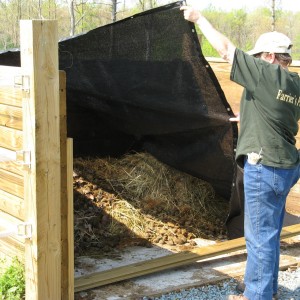-
Stables and Flies written in 1917
” The object of this article is to call attention to two important phases of a fly prevention campaign, to wit: a campaign against fly food in other words, a campaign for clean houses and premises; and a campaign against fly breeding places-in other words, a campaign against bad stable conditions.
Drs. Porter and Byrd of Florida have reported the result of a study of one hundred and thirteen stables in Jacksonville. They found that chickens around a stable were a help. They ate fly eggs and grubs.
If the stable floor was not perfect they always found eggs or larvae. A well dressed cement floor without cracks was the ideal. Practically all of the wooden floors were breeding places. Either the female would get through a crack but the liability that flies will find them a breeding place is small compared with wooden floors.
Worst of all was the record of the earthen floors. When the ground of the stable floor was hard and dry throughout no larvae were found; but where a part of the earth floor was soft and the earth floor was soft and moist, larvae were found in those parts of the stall floor that were dry and hard as well as in the soft parts. The examination was made by digging up and examining the top six inches of the ground.
It is next to impossible to prevent flies from breeding in a stable unless the floor is tight, dry, well drained and properly constructed. Taking care of the manure pile is easy though even more important. It must be fly proof. Furthermore, the manure box must be emptied once a week. It takes flies ten days to develop from mother through eggs, larvae and pupae into flies. To empty the manure box every week is to kill most of the young and to get the balance away from your neighborhood though you may be harming the neighborhood where you dump them.”
Have we learned anything in the last 100 years battling flies?
This article was written in 1917 by Dr. William Augusta Evans in his book, How to Keep Well, A health book for the home.
Fly Breeding and Feeding addressed 100 Years Ago
Call Us at (910) 725-2115 or Email Us at info@horseflynet.com
Horse Fly Net
This see-through breathable screen will last for years. It is made of polyester vinyl coated and heat sealed on the edges with brass grommets about every foot. It has no chemicals added. Our HorseFlyNets only cost approximately $2.00 a square foot for smaller sizes and less for larger. Our product is woven and manufactured in the USA.
HorseFlyNet®
Southern Pines, NC
(910) 725-2115
info@horseflynet.com

